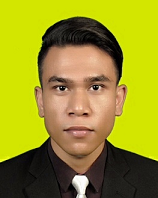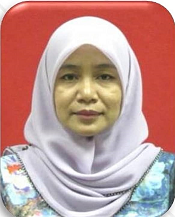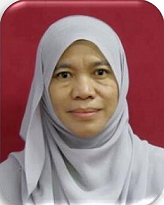Integrated STEM-based module: Relationship between students’ creative thinking and science achievement
DOI:
https://doi.org/10.22219/jpbi.v6i2.12236Keywords:
creative thinking, integrated STEM, science achievementAbstract
STEM-based learning innovations have been massively developed especially related to 21st Century skills. This study was done to explore a relationship between creative thinking and science achievement through the implementation of integrated STEM-based module on Reproduction topic. A quasi-experimental study involved pretest-posttest non-equivalent group design with sample of 60 eighth graders from a boarding school in Baling, Kedah, Malaysia. The samples was divided into two groups - 30 students of treatment group and 30 students of control group. The data were collected from pre-post-Reproduction Test Questions (RTQ) scores and pre-post-Creative Thinking Test Questions (CTTQ) scores. Pearson Correlation and one-way ANOVA at a significance level p < .05 were performed in analysing data. Findings reveal no statistically significant relationship between creative thinking and science achievement for both treatment group (r = .220, p = .243) and control group (r = .308, p = .098). Besides, there is a statistically significant and moderate and positive relationship between creative thinking indicator of fluency and science achievement (r = .463, p = .010) of the treatment group. In conclusion, general finding is an evidence that between creative thinking and science achievement shows a consistency in whatever teaching strategy implemented. In which, educators need to realize that academic achievement does not necessarily be a necessity in shaping one’s creativity. Therefore, further study is needed to investigate the relationship between these variables in the execution of STEM teaching and learning so that the findings can be generalized to a larger population.Downloads
References
Anwar, M. N., Aness, M., Khizar, A., Naseer, M., & Muhammad, G. (2012). Relationship of creative thinking with the academic achievements of secondary school students. International Interdisciplinary Journal of Education, 1(3), 1–4. Retrieved from https://www.researchgate.net/publication/338549060_Relationship_of_Creative_ Thinking_with_the_Academic_Achievements_of_Secondary_School_Students
Asghar, A., Ellington, R., Rice, E., Johnson, F., & Prime, G. M. (2012). Supporting STEM education in secondary science contexts. Interdisciplinary Journal of Problem-Based Learning Volume, 6(2), 85-125. doi: https://doi.org/10.7771/1541-5015.1349
Asrizal, F., Amran, A., & Ananda, A. (2017). Need analysis to develop adaptive contextual learning model. Proceeding of the 2nd International Conference on Teacher Education, 1, 78–83. Retrieved from https://osf.io/gxqev/download/?format=pdf
Bahaudin, M. Z. Bin. (2011). Hubungan kreativiti dengan pencapaian fizik pelajar tingkatan empat di Daerah Hulu Selangor [Universiti Pendidikan Sultan Idris]. In Universiti Pendidikan Sultan Idris. Retrieved from http://malrep.uum.edu.my/rep/Record/my.upsi.ir.359
Bahrum, S., Wahid, N., & Ibrahim, N. (2017). Integration of STEM education in Malaysia and why to STEAM. International Journal of Academic Research in Business and Social Sciences, 7(6), 645–654. doi: https://doi.org/10.6007/ijarbss/v7-i6/3027
Bajuri, M. R., Maat, S. M., & Halim, L. (2019). Relationship between creative thinking skills with learning achievement on physics concept application. February, 193–198. Retrieved from https://www.researchgate.net/publication/331272211_relationship_between_creative_thinking_skills_with_learning_achievement_on_physics_concept_application/related
Bermejo, R., Prieto, M. D., Fernández, M. C., Soto, G., & Sainz, M. (2013). A cognitive-creative profile of emotional talent. Journal of New Approaches in Educational Research, 2(1), 12–16. doi: https://doi.org/10.7821/naer.2.1.12-16
Binkley, M., Erstad, O., Herman, J., Raizen, S., Ripley, M., Miller-Ricci, M., & Rumble, M. (2012). Defining twenty-first century skills. In P. Griffin, B. McGaw, & E. Care (Eds.), Assessment and teaching of 21st century skills (pp. 17–66). Springer. doi: https://doi.org/10.1007/978-94-007-2324-5
Bunyamin, M. A. H. (2015). Pendidikan STEM Bersepadu: Perspektif global, perkembangan semasa di Malaysia, dan langkah kehadapan. The Bulletin of the Johor Association of Science and Mathematics Education, 25(1), 1–6. Retrieved from https://www.researchgate.net/publication/301567750_Pendidikan_STEM_ Bersepadu_Perspektif_Global_Perkembangan_Semasa_di_Malaysia_dan_Langkah_Kehadapan
Bunyamin, M. A. H., & Finley, F. (2016). STEM Education in Malaysia: Reviewing the current physics curriculum STEM education from international perspectives. International Conference of Association for Science Teacher Education. Retrieved from https://www.researchgate.net/publication/294722510_STEM_Education_ in_Malaysia_Reviewing_the_Current_Physics_Curriculum
Candrasekaran, S. (2013). Creativity and academic achievement of higher secondary school students in Tamilnadu. International Journal of Humanities and Social Science Invention, 3(8), 32–36. Retrieved from http://www.ijhssi.org/papers/v3(8)/Version-1/F0381032036.pdf
CDD, (Curriculum Development Division). (2014). Elemen KBAT dalam sumber. Kuala Lumpur: Kementerian Pendidikan Malaysia. Retrieved from https://www.moe.gov.my/menumedia/media-cetak/penerbitan/kbat/1334-elemen-kbat-dalam-sumber/file
CDD, (Curriculum Development Division). (2016). Panduan pelaksanaan sains, teknologi, kejuruteraan, dan matematik (STEM) dalam pengajaran dan pembelajaran. Kuala Lumpur: Kementerian Pendidikan Malaysia. Retrieved from https://www.slideshare.net/mohdgazali1/2016-1226-panduan-pelaksanaan-stem-dalam-pembelajaran-dan-pengajaran-150779012?from_action=save
Cohen, J. (1988). Statistical power analysis for the behavioral sciences. In Statistical Power Analysis for the Behavioral Sciences. Lawrence Erlbaum Associate. doi: https://doi.org/10.4324/9780203771587
English, L. D. (2016). STEM education K-12: Perspectives on integration. International Journal of STEM Education, 3(1), 1–8. doi: https://doi.org/10.1186/s40594-016-0036-1
Fidan, N. K., & Ay, T. S. (2016). Acquisition of operational environmental literacy in social studies course. International Journal of Environmental and Science Education, 11(13), 5951–5968. doi: https://doi.org/10.12973/ijese.2014.22a
Gay, L. R., Mills, G. L., & Airasian, P. (2012). Educational research: Competencies for analysis and application. Pearson. Retrieved from http://englishlangkan.com/produk/E Book Educational Research L R Gay Pearson 2012.pdf
Ghasemi, A., & Zahediasl, S. (2012). Normality tests for statistical analysis: A guide for non-statisticians. International Journal of Endocrinology and Metabolism, 10(2), 486–489. doi: https://doi.org/10.5812/ijem.3505
Hock, L. C. (2016). STEM roadmap to meet growing demand for engineers in the future. Jurutera. Retrieved from http://www.myiem.org.my/content/press_%0Arelease-305.aspx
Hogg, R. V., Tanis, E. A., & Zimmerman, D. L. (2018). Probability and statistical inference. Pearson. Retrieved from https://www.pearsonhighered.com/assets/preface/0/1/3/5/013518939X.pdf.
Hussin, F. Bin, Ali, J., & Noor, M. S. Z. (2014). Kaedah penyelidikan & analisis data SPSS. UUM Press. Retrieved from http://lintas.uum.edu.my:8080/elmu/index.jsp?module=webopac-l&action=fullDisplayRetriever.jsp&szMa terialNo=0000805115
Idris, N. (2013). Penyelidikan dalam pendidikan (p. 570). McGraw-Hill.
Jauk, E., Benedek, M., Dunst, B., & Neubauer, A. C. (2013). The relationship between intelligence and creativity: New support for the threshold hypothesis by means of empirical breakpoint detection. Intelligence, 41(4), 212–221. doi: https://doi.org/10.1016/j.intell.2013.03.003
Jayarajah, K., Saat, R. M., & Rauf, R. A. A. (2014). A review of science, technology, engineering & mathematics (STEM) education research from 1999-2013: A Malaysian perspective. Eurasia Journal of Mathematics, Science and Technology Education, 10(3), 155–163. doi: https://doi.org/10.12973/eurasia.2014.1072a
Kadir, K. H. B. A., Nordin, N. M., & Iksan, Z. (2017). Kesepaduan elemen analogi dan teknologi maklumat dalam modul sains (e-smart) bagi menerapkan kemahiran berfikir kreatif murid di Abad 21. Simposium Pendidikan Di Peribadikan: Perspektif Risalah An-Nur (SPRiN2017), 162–170. Retrieved from http://conference.ukm. my/sprin/index.php/sprin/sprin/paper/view/60/23
Mahmud, D. A. G. (2011). Haluan kerja pendidikan: Merealisasikan agenda transformasi negara. Retrieved from http://appsjohor.moe.gov.my/jpnjohor/v6/pdf/haluan_kerja_pendidikan.pdf
McFarlane, D. A. (2013). Understanding the challenges of science education in the 21st century: New opportunities for scientific literacy. International Letters of Social and Humanistic Sciences, 4, 35–44. doi: https://doi.org/10.18052/www.scipress.com/ILSHS.4.35
McKechan, S., & Ellis, J. (2014). Collaborative learning in the Scottish curriculum for excellence: The challenges of assessment and potential of multi-touch technology. Education 3-13, 42(5), 475–487. doi: https://doi.org/10.1080/03004279.2012.717959
MoE, M. of E. (2013). Malaysia education blueprint 2013 - 2025 (Preschool to post-secondary education). Ministry of Education Malaysia. Retrieved from https://www.moe.gov.my/menumedia/media-cetak/penerbitan/dasar/1207-malaysia-education-blueprint-2013-2025/file
Mustafa, N., Ismail, Z., Tasir, Z., & Mohamad Said, M. N. H. (2016). A meta-analysis on effective strategies for integrated STEM education. Advanced Science Letters, 22(12), 4225–4288. doi: https://doi.org/10.1166/asl.2016.8111
Mustaffa, N., & Ismail, Z. (2015). Problem-Based Learning (PBL) in schools: A meta-analysis. 12th International Conference of The Mathematics Education into the 21st Century Project The Future of Mathematics Education in a Connected World, September 2014. Retrieved from https://madipedia.de/wiki/MEC_21_-_12th_International_Conference_of_The_Mathematics_Education_into_the_21st_Century_Project
Nami, Y., Marsooli, H., & Ashouri, M. (2014). The relationship between creativity and academic achievement. Procedia - Social and Behavioral Sciences, 114(1962), 36–39. doi: https://doi.org/10.1016/j.sbspro.2013.12.652
Nori, R., Signore, S., & Bonifacci, P. (2018). Creativity style and achievements: An investigation on the role of emotional competence, individual differences, and psychometric intelligence. Frontiers in Psychology, 9(OCT), 1–11. doi: https://doi.org/10.3389/fpsyg.2018.01826
Osman, K., & Saat, R. M. (2014). Editorial: Science, Technology, Engineering and Mathematics (STEM) education in Malaysia. Eurasia Journal of Mathematics, Science and Technology Education, 10(3), 153–154. doi: https://doi.org/10.12973/eurasia.2014.1077a
Peterson, K. D., & Deal, T. E. (2016). The shaping school culture fieldbook. In Shaping School Culture. Jossey-Bass A Wiley Imprint. doi: https://doi.org/10.1002/9781119210214
Piergiovanni, P. R. (2014). Creating a critical thinker. College Teaching, 62(3), 86–93. doi: https://doi.org/10.1080/87567555.2014.896775
Prayogi, S., & Yuanita, L. (2018). Critical-inquiry-based-learning: model of learning to promote critical thinking ability of pre-service teachers. IOP Conf. Series: Journal of Physics: Conf. Series, 947, 12013. doi: https://doi.org/10.1088/1742-6596/947/1/012013
Rauf, R. A. A., Rasul, M. S., Sathasivam, R., & Rahim, S. S. A. (2017). Training of trainers STEM build program for primary science teachers: An initiative towards STEM education in school. International Conference New Perspectives in Science Education. Retrieved from http://eprints.um.edu.my/id/eprint/17410
Scott, C. L. (2015). The futures of learning 2: What kind of learning for the 21st Century? https://unesco.org/ark:/48223/pf0000242996
Serrat, M. A., Dom, A. M., Buchanan, J. T., Williams, A. R., Efaw, M. L., & Richardson, L. L. (2014). Independent learning modules enhance student performance and understanding of anatomy. Anatomical Sciences Education, 7(5), 406–416. doi: https://doi.org/10.1002/ase.1438
Siew, N. M., & Ambo, N. (2018). Development and evaluation of an integrated project-based and STEM teaching and learning module on enhancing scientific creativity among fifth graders. Journal of Baltic Science Education, 17(6), 1017–1033. doi: https://doi.org/10.33225/jbse/18.17.1017
Siew, N. M., Goh, H., & Sulaiman, F. (2016). Integrating STEM in an engineering design process: The learning experience of rural secondary school students in an outreach challenge program. Journal of Baltic Science Education, 15(4), 477–493. Retrieved from http://journals.indexcopernicus.com/abstract.php?icid= 1217790
Sturyf, A., Loof, H. de, Pauw, J. B., & Petegem, P. van. (2019). Students’ engagement in different STEM learning environments: Integrated STEM education as promising practice? International Journal of Science Education, 41(10). doi: https://doi.org/10.1080/09500693.2019.1607983
Sulaiman, T., Ayub, A. F. M., & Sulaiman, S. (2015). Curriculum change in English language curriculum advocates higher order thinking skills and standards-based assessments in Malaysian primary schools. Mediterranean Journal of Social Sciences, 6(2), 494–500. doi: https://doi.org/10.5901/mjss.2015.v6n2p494
Thomas, B., & Watters, J. J. (2015). Perspectives on Australian, Indian and Malaysian approaches to STEM education. International Journal of Educational Development, 45, 42–53. doi: https://doi.org/10.1016/j.ijedudev.2015.08.002
Downloads
Published
Issue
Section
License
Authors who publish with JPBI (Jurnal Pendidikan Biologi Indonesia) agree to the following terms:
- For all articles published in JPBI, copyright is retained by the authors. Authors give permission to the publisher to announce the work with conditions. When the manuscript is accepted for publication, the authors agree to automatic transfer of the publishing right to the publisher.
- Authors retain copyright and grant the journal right of first publication with the work simultaneously licensed under a Creative Commons Attribution-ShareAlike 4.0 International License that allows others to share the work with an acknowledgment of the work's authorship and initial publication in this journal.
- Authors are able to enter into separate, additional contractual arrangements for the non-exclusive distribution of the journal's published version of the work (e.g., post it to an institutional repository or publish it in a book), with an acknowledgment of its initial publication in this journal.
- Authors are permitted and encouraged to post their work online (e.g., in institutional repositories or on their website) prior to and during the submission process, as it can lead to productive exchanges, as well as earlier and greater citation of published work (See The Effect of Open Access).

This work is licensed under a Creative Commons Attribution-ShareAlike 4.0 International License.





















